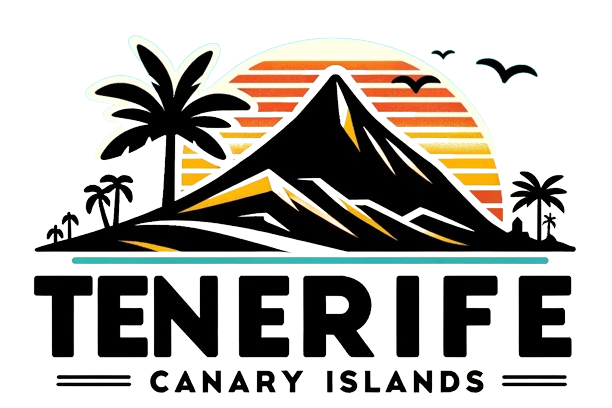The Guanches, the enigmatic indigenous people of the Canary Islands, left an indelible mark on Tenerife through their resilient society, spiritual reverence for nature, and masterful adaptation to volcanic terrains. Often romanticized as “Atlantic Amazons” or noble cave-dwellers, these Berber-descended islanders thrived in isolation for centuries before Spanish conquest in 1496, shaping the archipelago’s DNA with customs that echo in modern festivals like Los Finaos and place names like Taganana. As 2025 spotlights UNESCO-protected sites and DNA studies revealing North African roots, Guanche heritage surges in cultural revival— from mummification exhibits to silbo-like whistling workshops. Dive into their world of tagoror councils, goat-herding nomads, and sacred Teide, uncovering how Tenerife’s soul remains profoundly Guanche.
Origins and Arrival: Berber Migrants in Atlantic Isolation
Guanche ancestry traces to Amazigh (Berber) groups from North Africa’s Atlas region, migrating to the Canaries between 1000 BCE and the 1st century CE—likely via Roman-era voyages or earlier Phoenician routes. Genetic evidence from 2025 studies confirms 70–90% North African DNA in modern Canarians, with mitochondrial haplogroups linking to Morocco and Algeria. Tenerife’s Guanches, part of varied island groups (each with dialects like Tamazight variants), arrived in small boats, bringing goats, sheep, barley, and pottery but no metals or wheels—adapting to isolation without external contact for over a millennium.
This seclusion forged distinct tribes: Tenerife hosted nine menceyatos (kingdoms), from Anaga’s Beneharo to Tegueste’s rugged clans, each ruled by a mencey (king) advised by tagoror assemblies. Population estimates hit 30,000–50,000 pre-conquest, sustained by terraced farming (gofio from barley), fishing with bone hooks, and herding in mid-altitude caves like those in Barranco de Badajoz.
Society and Daily Life: Egalitarian Clans, Cave Dwellings, and Gender Roles
Guanche society balanced hierarchy with communal equity. Matrilineal in some aspects—women inherited land and led rituals—they practiced polygamy among nobles, with menceys wielding power over warfare and justice. Daily life revolved around transhumance: Summer caves in highlands for grazing, winter coastal settlements for fishing. Dwellings were natural caverns or drystone huts, furnished with goat-skin mats and clay pots.
Clothing: Women donned tamarco (goat-leather skirts), men short tunics; both went barefoot or in magua sandals. Diet emphasized gofio (toasted grain paste with milk or honey), cheese, fish, and wild fruits—sustainable and protein-rich. Artifacts like pintaderas (ceramic stamps for body painting) and ídolos (fertility figurines) reveal artistic flair, while games like el salto del pastor (pole-vaulting over ravines) honed agility for mountainous travel.
Gender dynamics empowered women: As achicas (priestesses), they conducted harvests; warrior queens like Dácil resisted conquest. Slavery existed via captives, but overall, a cooperative ethos prevailed—evident in shared tagoror decisions.
Spiritual World: Magec Sun God, Teide’s Guayota, and Ancestral Veneration
Guanche cosmology revered nature as divine. Magec, the sun god, embodied life force; Achamán, the supreme creator, oversaw balance. Teide was Echeyde, abode of Guayota—the malevolent devil imprisoned by Achamán, whose fury sparked eruptions (explaining lava as his breath). Sacred sites like Roque de los Pinos hosted offerings of milk and gofio to appease spirits.
Afterlife beliefs centered on mummification for elites: Bodies eviscerated, smoked with herbs, wrapped in goat skins, and interred in caves—over 1,000 mummies discovered, like the iconic Mummy of San Andrés (now in Santa Cruz’s museum). Commoners received simple burials. Rituals included harimaguada priestesses channeling faycán oracles, with silbo gomero whistling for long-distance communication (still practiced on La Gomera, influencing Tenerife’s variants).
Funerary rites prefigure Los Finaos: Food offerings for souls, echoing ancestral veneration that blended into Catholic All Souls’ traditions post-conquest.
Resistance and Conquest: The Fall of a Warrior Culture in 1496
Alonso Fernández de Lugo’s 1494–1496 campaigns ended Guanche autonomy. First Peace of Los Realejos (1494) allied some menceys; the Second Battle of Acentejo (1495) saw Tegueste’s warriors rout Spaniards in guerrilla ambushes using stones and guanches (spears). Yet, superior arms and diseases decimated ranks—Beneharo surrendered in 1496, marking Tenerife’s full incorporation.
Many Guanches enslaved or assimilated; survivors like princess Dácil married conquerors, birthing mestizo culture. Resistance lingered in rebel hideouts like Anaga’s caves until the 16th century.
Guanche Legacy Today: Revival, Museums, and Cultural Echoes in 2025
Guanche influence permeates Tenerife:
- Language: Words like gofio, baifo (lamb), tagoror persist; 2025 apps teach Tamazight roots.
- Festivals: Los Finaos vigils, Romería de San Benito incorporate Guanche dances.
- Sites: Museo de la Naturaleza y el Arqueología (MUNA) in Santa Cruz houses mummies and pintaderas; Pirámides de Güímar debates pre-Columbian links.
- Revival: Cabildo-backed workshops in silbo, pottery; DNA tourism traces Berber heritage.
In 2025, Anaga Biosphere Reserve events highlight Guanche trails (PR-TF 8), while UNESCO pushes intangible heritage status. Eco-tours to caves like Cueva de Achbinico (Guanche shrine turned Christian chapel) blend history with hikes.
| Key Artifact/Site | Location | Significance |
|---|---|---|
| Mummy of San Andrés | MUNA, Santa Cruz | Elite embalming example |
| Pintaderas | Archaeological museums | Body/tattoo stamps |
| Tagoror circles | Anaga trails | Assembly sites |
| Cueva del Viento | Icod | Habitation evidence |
Experiencing Guanche Heritage: Practical Tips for Tenerife Explorers
Start in Santa Cruz: MUNA (€5 entry) for mummies; free audio guides in English. Hike Anaga’s laurel forests—guided Guanche routes (€20, book via Cabildo) reveal cave art. Taste gofio at La Orotava markets; join silbo classes in La Laguna.
Pro tip: Visit during Baja Insular Festival (August) for reenactments. Respect sites—no removing artifacts; use marked paths to preserve fragile ecosystems.
Guanche culture isn’t extinct—it’s Tenerife’s foundational rhythm, where mountain spirits still whisper in the wind. Embrace it, and the island reveals its deepest truths.
